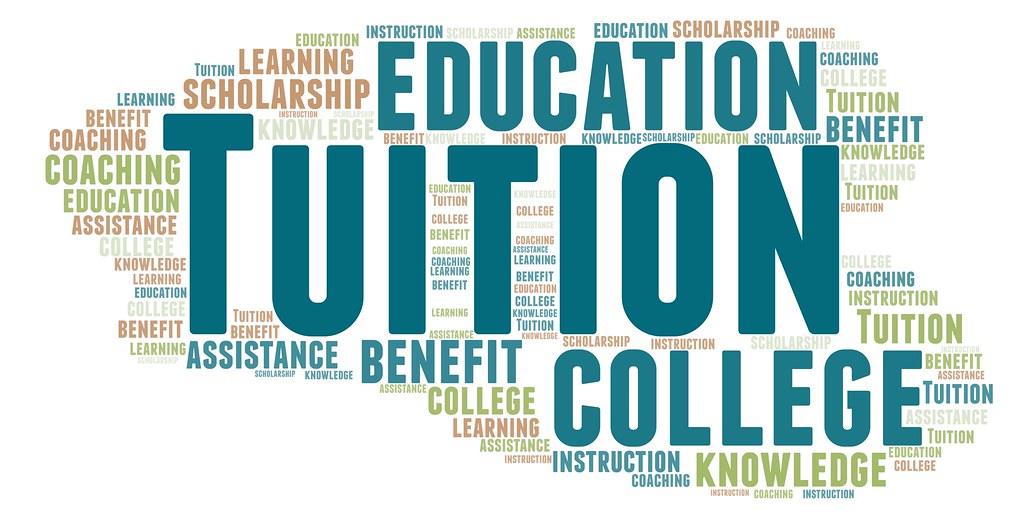University Tuition Increases
Along with the offers came the university tuition increase. According to incomplete statistics, more than 40 private and public universities have raised their tuition fees in the United States. According to data published by U.S. News, private college tuition has increased by 134 per cent over the past 20 years, out-of-state tuition at public universities has risen by 141 per cent, and in-state tuition at public universities has been increased by a staggering 175 per cent.
Most Increasing Tuition University
According to this chart you can see how much has college tuition increased:
| Universities with the highest tuition fee increases | ||||||||
|---|---|---|---|---|---|---|---|---|
| 2023-24 | 2024-25 | Growth Rate | ||||||
| Princeton | $59,710 | $62,400 | 5.60% | |||||
| Stanford | $61,731 | $65,127 | 5.50% | |||||
| Duke | $63,450 | $66,325 | 4.53% | |||||
| Brown | $65,657 | $68,612 | 4.50% | |||||
| UW St.Louis | $61,750 | $64,500 | 4.50% | |||||
| CIT | $60,816 | $63,402 | 4.25% | |||||
| Penn | $58,633 | $60,920 | 3.90% | |||||
| Yale | $64,700 | $67,250 | 3.90% | |||||
| MIT | $29875 per sem | $30995 per sem | 3.75% | |||||
The Reason Why Inflation of Education Happens
Higher education is naturally more costly as it becomes more sophisticated
Looking at the top 20 most expensive colleges for tuition in 2023, expensive schools tend to be well-ranked comprehensive universities or liberal arts colleges. These schools may offer a higher quality of education. They are more likely to employ outstanding professors, smaller class sizes, state-of-the-art facilities, Co-op programmes, exchange opportunities, etc., that help enrich the learning experience. Schools like NYU’s Stern School of Business, which has 17 partner schools in Europe and Asia, allow students to travel to other top business schools for exchanges, and the Short-Term Immersions program provides students with global exchange opportunities.
Economic situation
Although we are talking about the schools with the largest tuition increases, tuition inflation can be more than just these schools. Education inflation is the general trend. One thing is that public funding for higher education is missing as government funding for education has decreased since the recession. It’s also a point that some institutions don’t have as many endowments as they used to, which requires students to pay tuition to pay for it.
High cost of the traditional university model
Community colleges and online courses are less expensive, but if students are looking for the traditional college model, such as a comfortable and superior learning and living environment, well-appointed and convenient labs and labs, big and beautiful libraries and buildings, and a wide variety of clubs and activities, all of these require a lot of manpower and resources to build and maintain.
The price tag on college tuition is actually much higher than what students really need to pay
Most schools advertise their tuition at what is known as the ‘sticker price’ – that is, the full amount of tuition paid out-of-pocket without any grants or scholarships. The vast majority of students end up paying far less than that. For example, the average sticker price for a private four-year college is $36,800, but the average student usually pays much less.
Of course, some employers and graduate schools may look at your college origins. Graduating from a well-known and prestigious university is more likely to help you knock on doors. And since U.S. universities focus a lot on alumni culture, getting into one of these schools is more likely to bring you a more valuable network of alumni contacts.
Financial Aid when University Tuition Increases
Princeton
Its financial aid is very strong, with a $3.1 billion operating budget for the next academic year, an increase of about 6.2 percent over the total operating budget of $2.92 billion for 2023-24, and a budget that includes an increase in undergraduate financial aid from $268 million to $279 million, with grants for undergraduates estimated at $74,380.
This increase in financial aid builds on previous aid expansions in the fall of 2023 when the University expanded the financial aid package by eliminating the student contribution requirement and also expanded full financial aid eligibility to families earning up to $100,000 per year. Before this change, large financial aid was only available to families earning up to $65,000 annually. The net cost of attending Princeton for financial aid recipients is projected to be approximately $13,000 in 2024-25.
MIT
As the inflation in education comes, MIT’s projected budget for undergraduate financial aid for the 2024-25 academic year will increase to $167.3 million, more than offset by a 3.75 per cent tuition increase. The average scholarship for students receiving financial aid next year is estimated at $63,146.
Last year, more than 39 per cent of MIT undergraduates received enough financial aid to keep them out of tuition. MIT is one of only eight universities in the United States with a fully Need-Blind undergraduate admissions policy. For students from families with incomes of $75,000 and below, their parents are not required to pay the cost of attendance, including tuition, housing, food and personal expenses. While financial aid programmes primarily support students from low- and moderate-income families, even families with incomes over $250,000 may qualify for financial aid based on their circumstances, such as having two or more children in college at the same time.
Stanford University
Stanford University, one of the most expensive schools in the United States, has a lot of resources for their scholarships, with about two-thirds of undergraduates receiving some form of financial aid, and 58% of undergraduates receiving Stanford scholarships, including athletic scholarships.
Yale
The undergraduate financial aid budget of $241 million for the 2023-24 academic year has more than tripled since the 2007-08 academic year, the percentage of Yale undergraduates receiving need-based aid has increased from 42 per cent to 53 per cent during the same period, more than 3,500 undergraduates are currently receiving financial aid from Yale, and the average grant at Yale is more than $66,000 – an amount that exceeds current tuition costs. You can use Yale’s generous scholarships to offset educational inflation.
University of Pennsylvania
The Board approved a record $311 million budget for undergraduate financial aid, a 4.5 percent increase over the previous year. The corresponding increase in the financial aid budget offset increased costs for students with financial needs.
Last year, the University of Pennsylvania announced that students with annual family incomes of $75,000 or less would receive a financial aid package that covers at least tuition, fees, housing and meals. As a result of this policy, more than 200 students received larger financial aid packages and a set of Penn First Plus supplements, including first-year laptop grants and funding for summer internships and research opportunities.
CIT
CIT’s financial aid policies come in the form of Grants & Scholarships, Work-Study, and Loans.
Duke University
If you’re a Duke student dealing with university fees increase you can look at these policies. In the current academic year, 50 percent of Duke undergraduates receive some form of financial aid. Not only do students from low-income families receive financial aid, but those who do include students with family incomes of up to $200,000 or more. While financial aid varies based on family income and other circumstances, the average total financial aid for first-year students enrolled in 2022 and eligible for aid is $59,578, and approximately 21 per cent of students receive financial aid grants sufficient to cover the full cost of tuition.
Brown University
Undergraduate financial aid has long been one of the fastest-growing portions of Brown’s annual budget, meeting 100 per cent of every undergraduate student’s financial need, providing full tuition for families with typical asset-based annual incomes of $125,000 or less. In contrast, students from families with typical asset-based incomes of less than $60,000 per year receive financial aid that covers all costs, including tuition, housing, meals, books and other expenses.
Washington University in St. Louis
It has a Need-Blind policy for Native American students and offers a free undergraduate education to students from Missouri and southern Illinois whose family income does not exceed $75,000 per year.
Importance of understanding the factors contributing to university tuition increases
Informed Decision-Making: By grasping the drivers behind colleges raising tuition, prospective students and their families can make better-informed decisions when selecting a college or university. Understanding the rationale behind the increased costs allows individuals to evaluate the value proposition offered by institutions.
Financial Planning: Knowledge of the reason why inflation of education is on the rise enables students and families to engage in effective financial planning. This understanding helps them anticipate and prepare for the financial commitment required for higher education, including exploring scholarship opportunities, financial aid options, and budgeting strategies.
Impact on Student Experience: The impact of tuition increases goes beyond financial implications and can influence the overall student experience. Understanding the drivers behind these cost escalations can shed light on how resources are allocated within institutions, affecting academic programs, support services, and campus infrastructure.
Conclusion
The situation of university tuition increases is a trend among US universities.The schools with the highest tuition increases are, for example, Princeton, MIT, and Yale. We need to understand the reasons behind the high cost of higher education, which can be valuable for students in picking the best university for them.
According to projections, the average cost of tuition for a four-year programme at a public university is expected to reach approximately $16,934 by the 2032/33 academic year. In addition, the average cost of a four-year college programme is projected to exceed $150,000 in 10 years, assuming a 5 per cent annual increase. This provides important information for you and your family to plan ahead and save for education costs.
- Out-of-state tuition is usually higher than in-state tuition, which is determined by how public colleges and universities are funded. State-funded colleges and universities receive subsidies from the state government to provide lower tuition rates for in-state residents. Out-of-state students often do not benefit from this subsidy, so these students pay higher tuition.
The rationale behind this pricing structure is to prioritise in-state residents, who have access to affordable higher education because their families contribute to the state’s tax revenues. Students outside the state, on the other hand, are required to pay the full cost of their education because they do not contribute to the state’s tax revenues.
This difference in tuition helps maintain affordability of higher education for in-state residents while generating additional revenue from out-of-state students. Balancing the financial needs of the university while ensuring access to education for both local and non-local students is a common practice at public institutions.
- Universities require continuous investment in academic resources, faculty salaries, campus infrastructure, etc.
- Modern universities are complex to operate and require a great deal of manpower and resources to comply with regulatory standards and to continue to evolve.
- Higher education degrees are valuable, and the better the college degree, the more likely you are to find a well-paying job and grow as a person.
This depends on a combination of factors unique to your individual circumstances and priorities. It’s essential to conduct thorough research, seek guidance from academic counselors or financial advisors, and make an informed choice that best suits your academic, financial, and personal needs and future plan.








